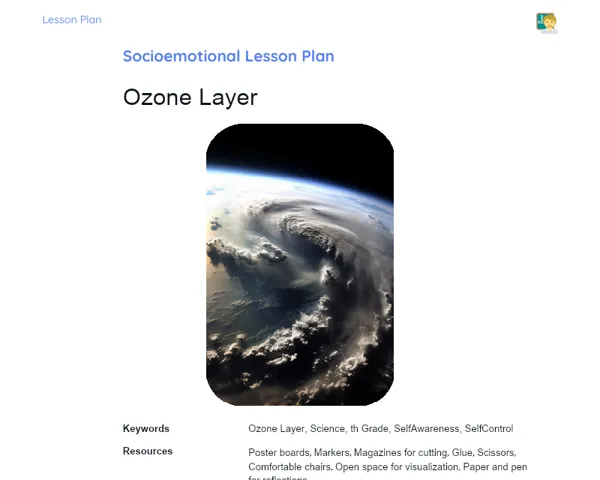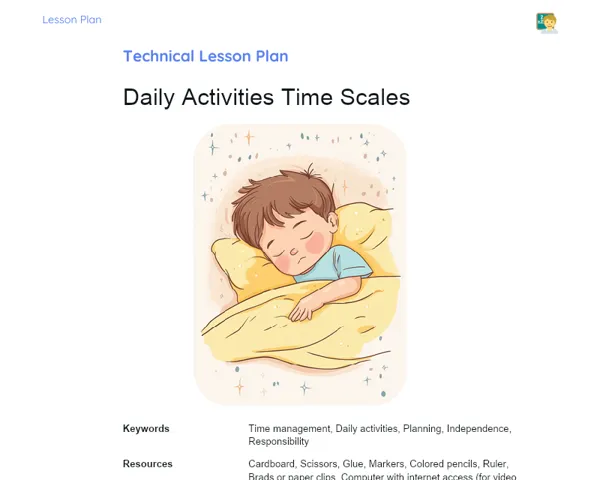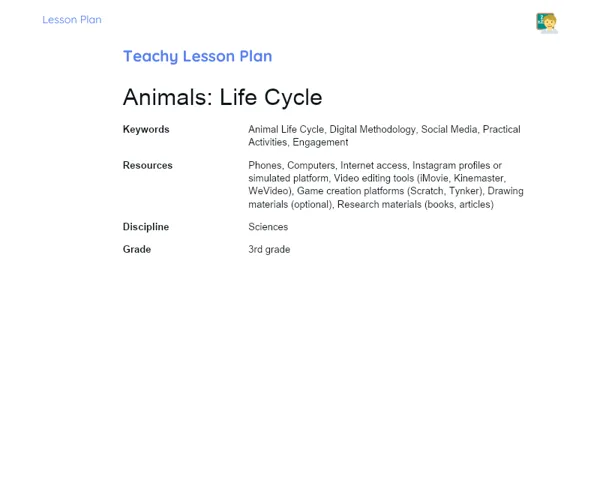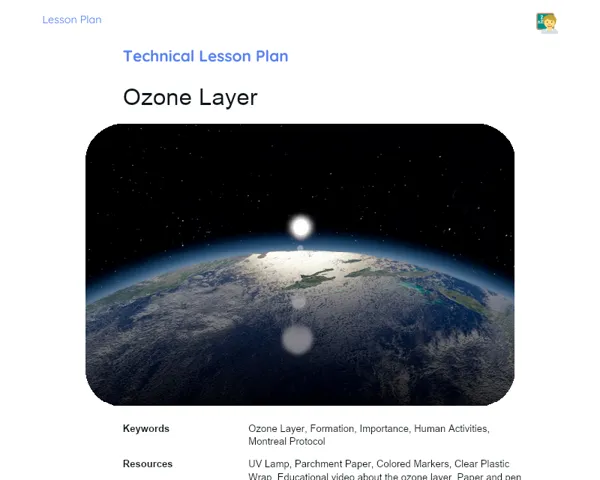Lesson Plan | Lesson Plan Tradisional | Human Body: Respiratory System
| Keywords | Respiratory System, Lungs, Airways, Gas Exchange, Anatomy, Diaphragm, Intercostal Muscles, Cellular Respiration, Homeostasis, Energy, Carbon Dioxide, Oxygen |
| Resources | Whiteboard, Markers, Slide Presentation, Images or Diagrams of the Respiratory System, Multimedia Projector, Note Sheets, Pens or Pencils, An Anatomical Model of the Respiratory System (optional) |
Objectives
Duration: (10 - 15 minutes)
This stage is intended to provide students with a clear outline of what the lesson will cover, setting the learning expectations right from the beginning. By laying out the objectives, students can focus on the central ideas, which aids in thorough understanding and better retention of the lesson content.
Objectives Utama:
1. Develop a clear understanding of the structure and function of the human respiratory system.
2. Recognise the key components of the respiratory system including the lungs and air passages.
3. Explain the breathing process and the role played by each part of the respiratory system.
Introduction
Duration: (10 - 15 minutes)
The goal here is to spark students' interest and prepare them for delving into the main content of the lesson. By sharing some initial background and captivating facts, students become more engaged and motivated to understand the workings and importance of the respiratory system.
Did you know?
Did you know that the lungs of a healthy adult can hold around 6 litres of air? Moreover, a person takes roughly 20,000 breaths each day. These facts give us an insight into how active and vital the respiratory system is in our daily lives.
Contextualization
To begin our lesson on the respiratory system, it is important to set the context by explaining the essential role of breathing in sustaining life. Clarify that the respiratory system is responsible for supplying oxygen to our body while also expelling carbon dioxide, a waste product of cellular processes. Emphasise that without breathing, our cells would not be able to produce the energy required for maintaining essential functions.
Concepts
Duration: (50 - 60 minutes)
This segment aims to deepen students' understanding of the respiratory system by providing detailed explanations and clear examples of how each component functions. The questions are designed to encourage active application of learned concepts, thereby reinforcing the learning and aiding long-term retention.
Relevant Topics
1. Anatomy of the Respiratory System: Discuss the major parts of the respiratory system, including the nose, pharynx, larynx, trachea, bronchi, and lungs. Emphasise the function of each component in the process of breathing.
2. Gas Exchange: Explain the mechanism of gas exchange that takes place in the pulmonary alveoli, where oxygen is absorbed into the blood and carbon dioxide is removed.
3. Mechanism of Breathing: Describe how the diaphragm and intercostal muscles coordinate to facilitate inhalation and exhalation. Discuss the changes in intrapulmonary pressure during different phases of the respiratory cycle.
4. Importance of Breathing: Cover the critical role of oxygen in cellular energy production and the removal of carbon dioxide, a harmful waste product. Underscore how breathing is essential for maintaining balance (homeostasis) in our body.
To Reinforce Learning
1. What are the key components of the respiratory system and what functions do they serve?
2. How does the process of gas exchange occur in the pulmonary alveoli?
3. Can you describe the role of the diaphragm and intercostal muscles in the process of breathing?
Feedback
Duration: (20 - 25 minutes)
This stage is designed to help students review and consolidate their learning by discussing and answering the questions posed earlier. Such interactions not only help clarify doubts but also reinforce key concepts, ensuring that students have a firm grasp of the subject matter.
Diskusi Concepts
1. What are the key components of the respiratory system and what functions do they serve? 2. The main components of the respiratory system include: 3. Nose: Conditions the incoming air by filtering, warming, and humidifying it. 4. Pharynx: Acts as a common passageway for both air and food. 5. Larynx: Houses the vocal cords and safeguards the trachea during swallowing. 6. Trachea: Serves as the air passage connecting the nose and lungs. 7. Bronchi: The branching structures that carry air into the lungs. 8. Lungs: The main organs responsible for gas exchange. 9. How does the process of gas exchange occur in the pulmonary alveoli? 10. Within the pulmonary alveoli, gas exchange occurs as follows: 11. Oxygen from the inhaled air diffuses through the walls of the alveoli into the blood capillaries. 12. At the same time, carbon dioxide produced by our cells is transferred from the blood into the alveoli and eventually exhaled. 13. This exchange is crucial for maintaining proper oxygen levels in the blood and eliminating carbon dioxide. 14. Describe the role of the diaphragm and intercostal muscles in the process of breathing. 15. The diaphragm and intercostal muscles play an essential role in breathing: 16. Diaphragm: This dome-shaped muscle contracts and moves downward during inhalation, increasing the space in the chest cavity and allowing air to fill the lungs. 17. Intercostal Muscles: Located between the ribs, these muscles help expand the chest cavity during inhalation and relax during exhalation, facilitating the movement of air in and out of the lungs.
Engaging Students
1. How would you explain the importance of the respiratory system to someone unfamiliar with its workings? 2. Why do you think the process of gas exchange is continuous and crucial for our survival? 3. Which part of the respiratory system do you believe is most important and why? 4. In what ways can the quality of the air we breathe affect our respiratory health?
Conclusion
Duration: (10 - 15 minutes)
The aim of this stage is to review and consolidate the key points covered during the lesson, ensuring that students leave with a well-organised and clear understanding of the topic, while appreciating its practical relevance in daily life.
Summary
['The respiratory system is made up of the nose, pharynx, larynx, trachea, bronchi, and lungs.', 'It is responsible for the critical gas exchange process in the pulmonary alveoli, where oxygen is absorbed into the blood and carbon dioxide is exhaled.', 'The diaphragm and intercostal muscles are key to enabling effective inhalation and exhalation.', "Breathing is vital for energy production in cells and the elimination of carbon dioxide, thus maintaining the body's homeostasis."]
Connection
This lesson effectively bridged theory with practical examples by explaining in detail the components and functions of the respiratory system. Practical examples, like the significance of gas exchange and the role of the diaphragm, helped relate the information to everyday life, making it easier for students to understand how our body works.
Theme Relevance
The topic is highly relevant in everyday life since breathing is a constant, essential process. Understanding the respiratory system underscores the importance of maintaining healthy lifestyle choices, such as avoiding polluted environments and smoking, which can adversely affect our health. Fun facts, like how often we breathe, serve to highlight the significance of this system.



